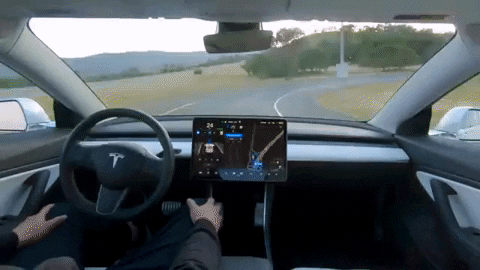
In this week's Abundance Insider: Pollution-eating artificial trees, Augmented Reality contact lenses, and a "brain decoder" that turns thoughts into speech.
Cheers,
Peter, Marissa, Kelley, Greg, Bri, Jarom, Joseph, Derek, Jason, Claire, Max and Nora
P.S. Send any tips to our team by clicking here, and send your friends and family to this link to subscribe to Abundance Insider.
P.P.S. Want to learn more about exponential technologies and hone in on your MTP/ Moonshot? Abundance Digital includes 100+ hours of course work and video archives for entrepreneurs, like you. Keep up to date on exponential news and get feedback on your boldest ideas from an experienced, supportive community. Click here to learn more and sign up.
Bulleit Brings 3D Printing Tech To Tribeca For A New Whiskey Experience

What it is: Bulleit Frontier Whiskey is displaying what it calls a ‘3D printed experience’ at the Tribeca Film Festival. The display includes robotic arms that ‘print’ cocktails. Essentially, as you can see from the accompanying GIF, the robot places patterns of beads infused with different cocktail flavoring into the whiskey.
Why it's important: Experiential marketing frequently brings out the most engaging displays of exponential technology. This project by Bulleit Frontier Works is a prime example of corporate innovation and tech experimentation within the food and beverage industry. From augmented reality e-commerce to artificial intelligence-powered customer service, how can your company leverage the technologies we feature in this digest to tap into new customer bases and drive more value? | Share on Facebook
Spotted by Max Goldberg / Written by Max Goldberg
Electric Car Price Tag Shrinks Along With Battery Cost

What it is: Thanks to the development of large-scale manufacturing in batteries and electric drivetrains, the cost of electric vehicles continues to drop, shortening the date for when analysts project EV’s will reach cost parity with internal combustion engines. Today, BloombergNEF projects that the crossover point is 2022, sooner than its projections of 2026 (in 2017) and 2024 (in 2018).
Why it's important: Demonetization will have dramatic positive effects for the proliferation of passenger EVs, the elimination of fossil fuels, and the feasibility of large-scale batteries for use cases such as shipping, construction and aircraft. This also highlights both the importance and difficulty in forecasting exponentials. Said Greg McDougal, CEO of Harbor Air Ltd, “we don’t want to be trying to get through the regulatory process after [electric aircraft] becomes economically viable, we want to do it now.” | Share on Facebook
Spotted by Marissa Brassfield / Written by Jason Goodwin
Scientists Develop ‘Brain Decoder’ That Turns Brain Signals Into Speech

What it is: Termed the ‘brain decoder,’ a new UCSF-developed tool can convert brain signals into a computer simulation of the vocal tract. By first simulating the movement of a speaker’s lips, jaw, tongue and larynx on the basis of brain activity in cerebral speech centers, researchers can then generate speech through a synthesizer. As part of the study, five volunteering epilepsy patients were first set up with brain-implanted electrodes and proceeded to read aloud while researchers tracked brain activity in language production regions. A “virtual vocal tract” was then created for each participant, all feeding an algorithmic synthesizer to generate dramatically accurate audio. In the words of UCSF doctoral student Josh Chartier, “We were shocked when we first heard the results — we couldn’t believe our ears.”
Why it's important: A burgeoning example of brain-computer interfaces (BCI), this brain decoder and its soon-to-come successors pose extraordinary implications for speech-impaired individuals. Up until now, the best available speech synthesis technology has been constrained to eye-tracking devices or those that map residual facial muscle movements. Words are spelled out letter-by-letter, delivered at under one tenth the rate of natural speech. Now with the promise of a clinically viable device, anyone suffering from speech loss — whether as a result of ALS, cerebral palsy, multiple sclerosis or Parkinson’s — may soon gain a voice for seamless communication. What other BCI applications can you think of? | Share on Facebook
Spotted by John de Rivaz / Written by Claire Adair
Scientists Share Results From NASA's Twins Study

What it is: NASA’s Twin Study entered into its final stages of integrative research in April, publishing a summary paper in Science explaining some of the key findings from the 10 research teams involved in the effort. The study — which compared the health of Scott and Mark Kelly during and after Scott’s yearlong stay in space — gives us a better understanding of the effects of space missions longer than six months. Unexpectedly, Scott experienced some significant changes in telomere dynamics, with more long telomeres post-flight than he had previously. Scott’s overall gene expression differed somewhat from Mark's during the flight, but reverted to baseline after returning to Earth; additionally, researchers found some indication of inflammation and thickening of the carotid arterial wall, which are suggestive of atherosclerosis that may not be reversible.
Why it's important: This research will guide NASA’s Human Research Program for years to come and give insights into the planning of longer missions on the ISS, the Moon, Mars and beyond. To the extent that telomere length is an indicator of longevity, space travel may not have the same negative impact on lifespan as one might expect. This study raises many questions about why telomeres grew longer, and whether these conditions could be replicated on Earth. | Share on Facebook
Spotted by David Ormesher / Written by Jason Goodwin and David Ormesher
Toddler Skin Cells Spark Discovery Of 2 New Diseases

What it is: Researchers from Montreal’s Douglas Mental Health University Institute and CHU Sainte-Justine Research Center have newly identified the link between a mutation in epigenetic regulator ACTL6B and two neurological genetic diseases. Prior to their joining forces, the Douglas Institute’s Carl Ernst and his team had harvested skin cells from toddlers with inexplicable seizures and neurodevelopmental deficits. By ‘reprogramming’ the skin cells into induced pluripotent stem cells (iPSCs), the researchers were able to make neurons from the iPSCs, compare them to healthy neurons, and thereby discover an ACTL6B mutation implicated in irregular neuronal development. As a result, iPSCs and CRISPR have now accelerated the discovery of one key culprit in the incidence of epilepsy and neurodevelopmental problems, giving way to future research.
Why it's important: Less than 10 years ago, the cost of genome sequencing was 10 times what is today. CRISPR-Cas9 had not yet been adapted for genome editing, and the reprogramming of human cells to iPSCs had only just been pioneered. Today, all three have begun to play a pivotal role in discovering the origins of disease and developmental disorders. Beyond their newfound illumination of the mechanics of cellular development, iPSCs and CRISPR genome editing allow us to identify mutations at record speeds, experiment with genetic alterations and even one day prevent mutation-resulting diseases in the first place. Welcome to an age of biological self-mastery. | Share on Facebook
Spotted by Marissa Brassfield / Written by Claire Adair
World’s First ‘BioSolar Leaf’ To Tackle Air Pollution In White City

What it is: Arborea, a startup spun out of Imperial College London, has created the world’s first “BioSolar Leaf,” a living structure capable of removing greenhouse gases and other pollutants from the air. At its core, the leaf is essentially a cultivation system for microalgae, diatoms and phytoplankton on large solar panel-like structures, which can be installed on land, buildings or other developments to improve surrounding air quality. Using the surface area of a single tree, the system can remove carbon dioxide and produce oxygen at a rate equivalent to 100 trees. The team also expects to harvest the biomass to extract additives for plant-based food products.
Why it's important: The most exciting developments in exponential technologies occur at the intersection of disciplines. As we saw last week with the creation of transparent wood, biology and materials science are converging to deliver solutions to some of our largest challenges in the areas of environmental health and food production. | Share on Facebook
Spotted by Marissa Brassfield / Written by Jason Goodwin
DARPA: This Smart Contact Lens Could Give Soldiers Superpowers

What it is: Researchers at French engineering school IMT Atlantique have developed the first smart contact lens that includes a standalone, flexible microbattery. In this version of the prototype, the flexible battery can power a small LED for several hours. Impressively, near-term iterations of this small-scale device will be able to receive visual information wirelessly via radio signals. In the long term, these lenses are slated to form the backbone for next-generation augmented reality eyewear.
Why it's important: Eventually, smart lenses like these will have profound implications for industry (from manufacturing to healthcare) and everyday life. DARPA and other government agencies are particularly interested in how this smart contact lens breakthrough will help them augment soldiers’ operational capabilities. What new capabilities and ‘superpowers’ are you excited to access when smart contact lenses hit the consumer mainstream? | Share on Facebook
Spotted by Marissa Brassfield / Written by Max Goldberg
What is Abundance Insider?
This email is a briefing of the week's most compelling, abundance-enabling tech developments, curated by Marissa Brassfield in preparation for Abundance 360. Read more about A360 below.
Want more conversations like this?
At Abundance 360, Peter's 360-person executive mastermind, we teach the metatrends, implications and unfair advantages for entrepreneurs enabled by breakthroughs like those featured above. We're looking for CEOs and entrepreneurs who want to change the world. The program is highly selective. Apply now for Abundance360 Summit if you'd like to develop an Abundance Mindset.
Abundance Digital is Peter’s online educational portal and community of abundance-minded entrepreneurs. You’ll find weekly video updates from Peter, a curated newsfeed of exponential news, and a place to share your bold ideas. Click here to learn more and sign up.
Know someone who would benefit from getting Abundance Insider? Send them to this link to sign up.
Topics: Abundance Insider Space Materials Science health Artificial Intellegence environment healthcare Augmented Reality Stem Cells wearables Brain computer interface mHealth electric vehicles marketing nasa







